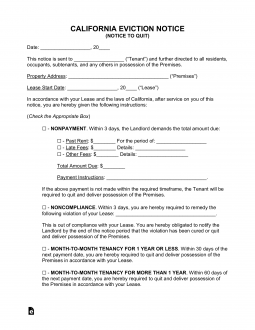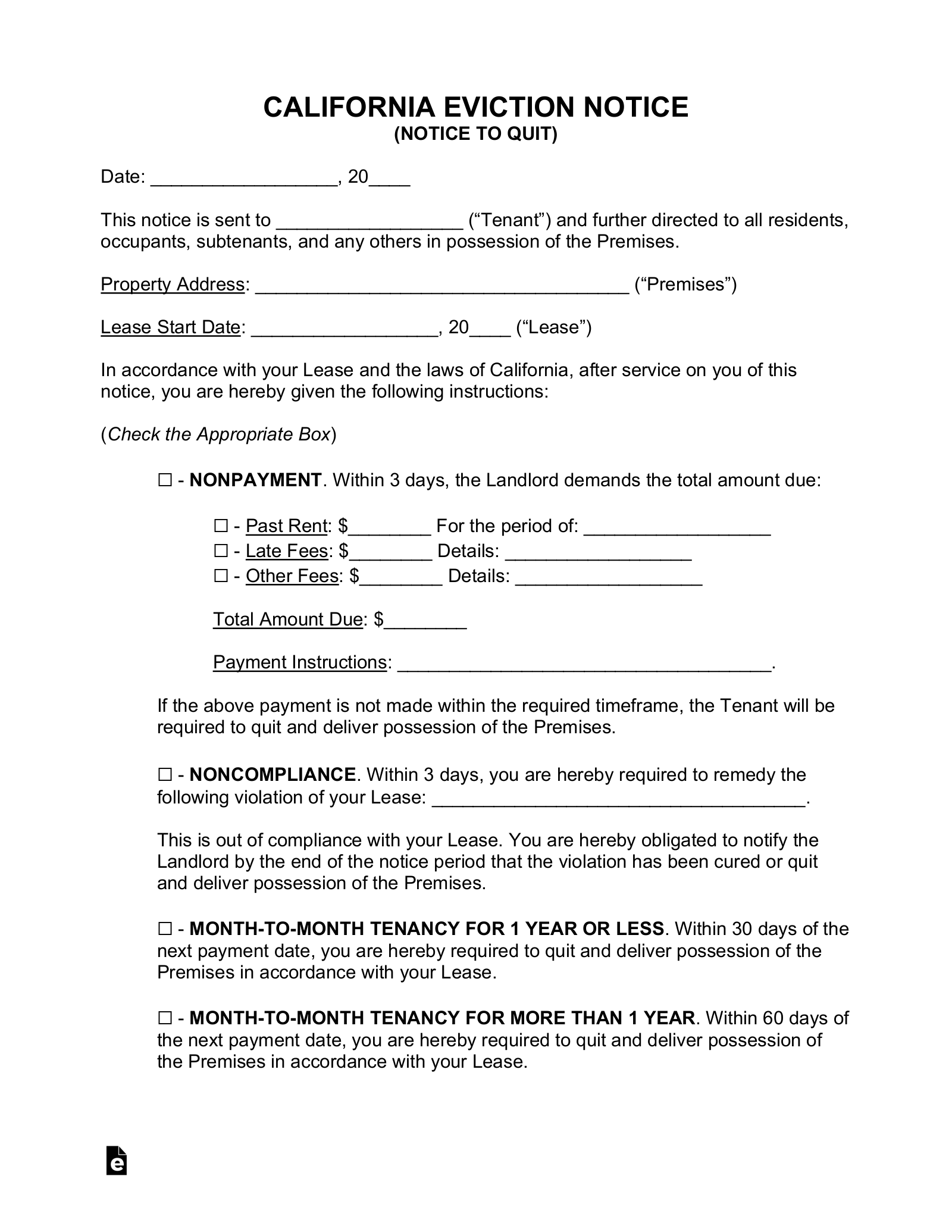Updated January 30, 2024
A California eviction notice is a letter given to a tenant when they have violated their lease agreement. The notice will detail the specific violation and how many days the tenant has to resolve the issue. If the tenant does not comply, they will be required to vacate the premises or face eviction.
By Type (6)
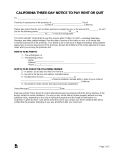 3-Day Notice to Quit (Non-Payment of Rent) – A landlord may serve a tenant with a 3-day notice if the tenant has failed to pay rent when it is due under the lease terms. 3-Day Notice to Quit (Non-Payment of Rent) – A landlord may serve a tenant with a 3-day notice if the tenant has failed to pay rent when it is due under the lease terms.
Download: PDF |
 3-Day Notice to Quit (Non-Compliance – Curable) – This form may be used when there are other breaches of the lease other than non-payment of rent. The tenant may fix the problem within three days or will have to vacate the premises. 3-Day Notice to Quit (Non-Compliance – Curable) – This form may be used when there are other breaches of the lease other than non-payment of rent. The tenant may fix the problem within three days or will have to vacate the premises.
Download: PDF |
 3-Day Notice to Quit (Non-Compliance – Incurable) – May be used to end a tenancy when the tenant has caused issues, such as selling drugs on the property or being a continual nuisance to the neighbors, that cannot be remedied. 3-Day Notice to Quit (Non-Compliance – Incurable) – May be used to end a tenancy when the tenant has caused issues, such as selling drugs on the property or being a continual nuisance to the neighbors, that cannot be remedied.
Download: PDF |
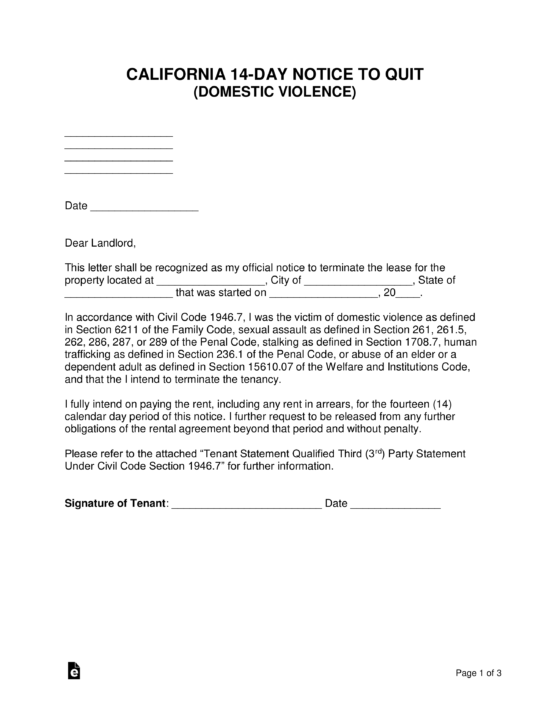 14-Day Notice to Quit (Domestic Violence Victim)– For victims of domestic violence or stalking. The tenant is able to terminate the lease. 14-Day Notice to Quit (Domestic Violence Victim)– For victims of domestic violence or stalking. The tenant is able to terminate the lease.
Download: PDF |
 30-Day Notice to Quit (Month-to-Month Tenancy Under 1-Year) – If a tenant has been on the property for less than a year, a landlord can give a 30-day notice to vacate the premises. 30-Day Notice to Quit (Month-to-Month Tenancy Under 1-Year) – If a tenant has been on the property for less than a year, a landlord can give a 30-day notice to vacate the premises.
Download: PDF |
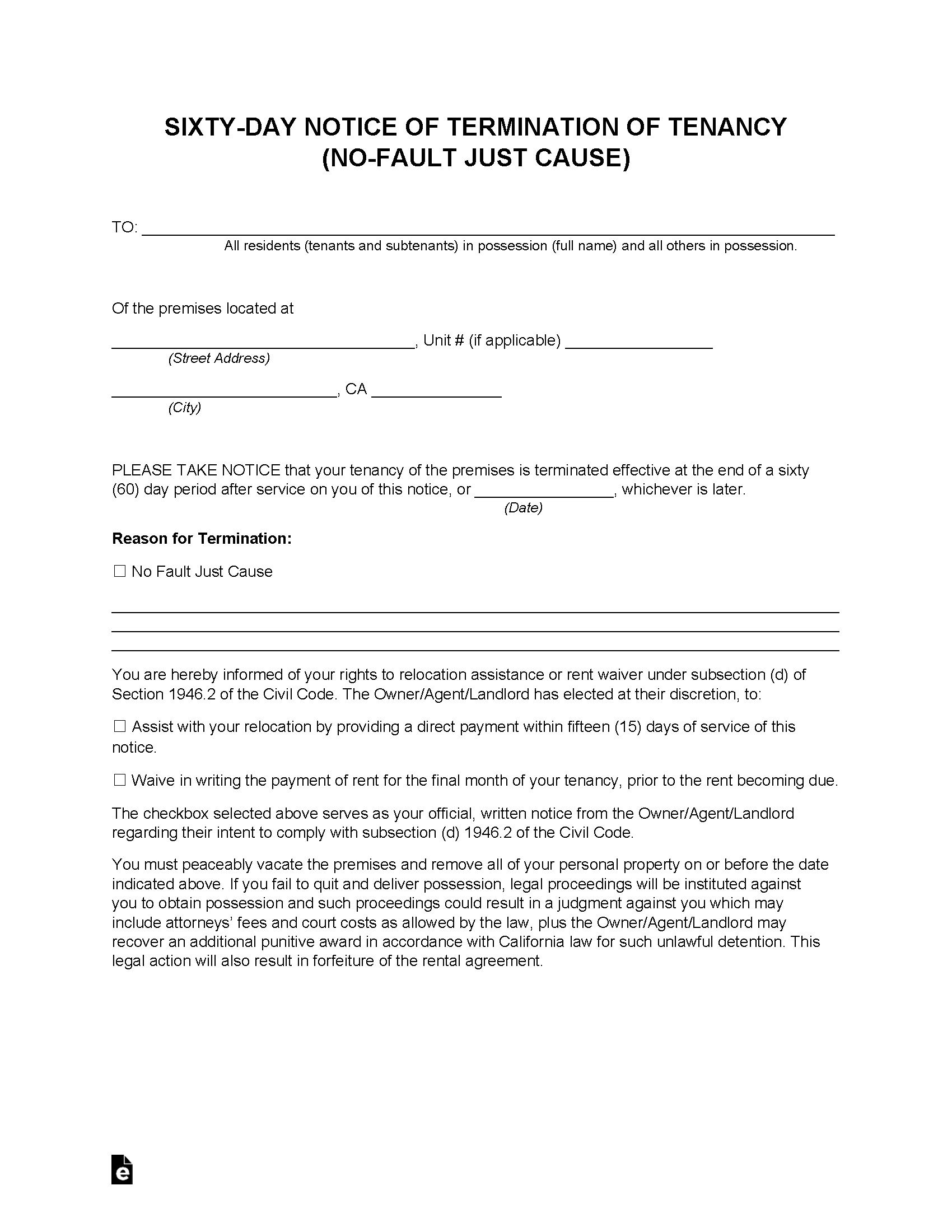 60-Day Notice to Quit (Month-to-Month Tenancy Over 1-Year) – If the tenant has been on the property at least a year or more, the landlord must give the tenant sixty days notice to vacate the premises. 60-Day Notice to Quit (Month-to-Month Tenancy Over 1-Year) – If the tenant has been on the property at least a year or more, the landlord must give the tenant sixty days notice to vacate the premises.
Download: PDF, MS Word, Open Document |
Table of Contents |
Prohibited Landlord Actions
Utility Shutoff – Landlords are prohibited from discontinuing utility services during any part of terminating a tenancy.[5] Consequences include actual damages plus up to $100 for each day the violation continues.[6]
Changing Locks – Landlords cannot revoke tenant access to the property by changing the locks or otherwise interfering with locking systems.[7]
Court Forms
Complaint (Form UD-100) – This form is to be filled out by the plaintiff and their lawyer. It details the reasons for the eviction and is to be filed with at the courthouse in the county where the property exists.Cover Sheet (Form CM-010) – The cover sheet is to be filed with the complaint; the information therein will be used to collect statistics of the types and number of like cases.
Summons (Form SUM-130) – The summons is the official notice of a lawsuit. It must be filed with the complaint and cover sheet at the courthouse of the county where the property is located. A copy should be delivered to the tenant following the filing at the courthouse.
Proof of Service – The proof of service is to be completed following the serving of the complaint and summons on the tenant. A copy should be filed with the court clerk once obtained by the landlord.
Answer (Form UD-105) – This form is used so that the tenant can either agree with or deny the statements made in the complaint.
Request to Set Case for Trial – Unlawful Detainer (Form UD-150) – This document can be used once everything has been filed with the courthouse. It is used to set a date for the court case and will indicate the type of trial, the estimated length thereof, and the issues that the judge will likely need to resolve.
Judgment for Unlawful Detainer (UD-110) – This form is to be filled out to officially indicate the outcome of the court case, determining whether it was the plaintiff (landlord) or defendant (tenant) that won.
Writ of Possession (EJ-130) – This is a form that enables the landlord to request that the sheriff’s department remove the tenant from the property if necessary.
How to Evict a Tenant (6 steps)
- Serve Notice on the Tenant
- File Papers with the Court
- Serve the Tenant
- Wait for the Tenant’s Response
- Seek a Judgment
- Deliver Writ of Possession to Sheriff’s Office
1. Serve Notice on the Tenant
Serve the tenant with the proper notice depending on the situation:
- 3-Day Notice to Quit (Non-Payment of Rent)
- 3-Day Notice to Quit (Non-Compliance – Curable)
- 3-Day Notice to Quit (Non-Compliance – Incurable)
- 30-Day Notice to Quit (Month to Month Tenancies Under 1-Year)
- 60-Day Notice to Quit (Month to Month Tenancies Over 1-Year)
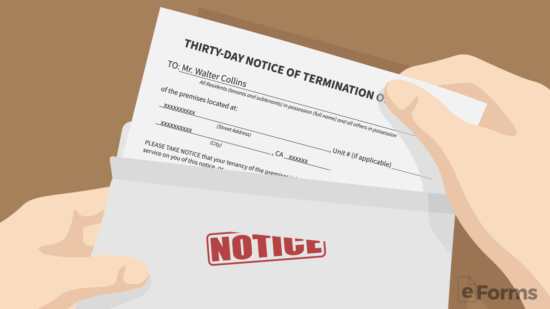
2. File Papers with the Court
If the tenant fails to respond in the requisite time period, the landlord may begin the eviction process in court by filing the following documents with the court in the county in which the property is located.
A filing fee of $435 is required at the time of filing. Additional may apply in Riverside, San Bernardino, and San Francisco counties.[8]

3. Serve the Tenant
The tenant must be served a copy of the documents filed with the court by a civil process server. The process server must fill out a Proof of Service form and provide it to the landlord to file with the court.

4. Wait for the Tenant’s Response
The tenant has five days to respond to the court if he or she was served in person. Otherwise, they will have 15 days to respond from the date the summons was mailed. The tenant must respond by filing an Answer (Form UD-105). The landlord will have to wait to hear from the court to see if the tenant filed the Answer.

5. Seek a Judgment
If the tenant does not respond, you can ask for a default judgment from the court. You will have to fill out the following three forms to have the court authorize eviction:
- Request for Entry and Default Judgment (CIV-100)
- Judgment for Unlawful Detainer (UD-110)
- Writ of Possession (EJ-130)

6. Deliver Writ of Possession to Sheriff’s Office
Once the landlord has a judgment and a court-approved writ of possession, they may deliver it to the local sheriff to execute the judgment on behalf of the landlord.


